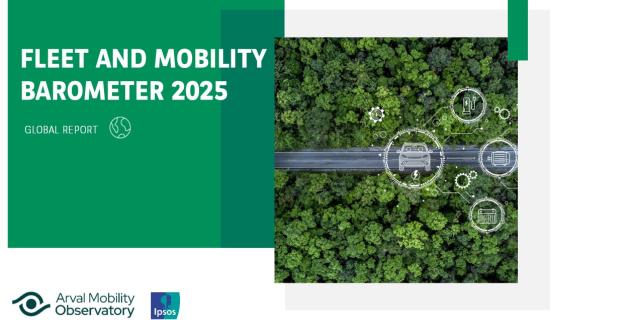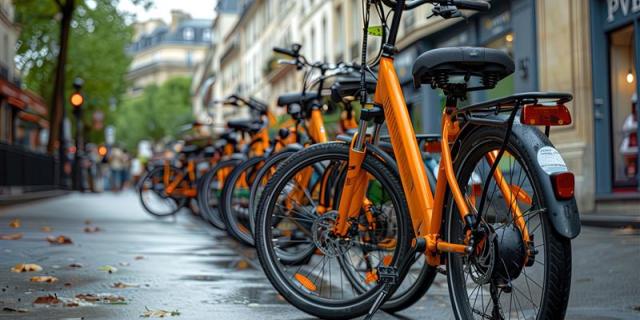Towards a new science of cities
Paris, 30th of October 2020

Data is a key component of Smart Cities; indeed data help cities to improve air quality, safety, security, sustainability and mobility amongst others.
Does the increasing diversity and volume of data available about urban systems open the possibility of constructing a quantitative 'science of cities', with the aim of identifying and modelling essential phenomena?
That is the question we asked to Marc Barthelemy Research Director at the Institut de Physique Théorique (CEA-Saclay) and Associate member of the Centre d’Analyse et de Mathématique Sociales (EHESS, Paris), about the Science of Cities.
Arval Mobility Observatory : Why did you decide to study cities ?
Marc Barthelemy: The increasing availability of pervasive data in various fields has opened exciting possibilities of renewed quantitative approaches to many phenomena. This is particularly true for cities and urban systems for which different devices at different scales produce a very large amount of data potentially useful to construct a ‘new science of cities’ (see for example M. Batty, The new science of cities, The MIT press, 2013; M. Barthelemy, The structure and dynamics of cities, Cambridge Univ. Press., 2016).
A new problem we have to solve is then to extract useful information from these huge datasets and construct theoretical models for explaining empirical observations. In particular, a common difficulty shared by many complex systems such as cities is the existence of a large number of agents, acting through a variety of processes that occur over a wide range of time and spatial scales.
It is then necessary to disentangle these processes and to singling out the few ones that govern the dynamics of cities. This hierarchization of processes is of prime importance and a failure to do so leads to models which are either too complex to give any real insight into the phenomenon, or too simple to provide a satisfactory framework which can be built upon.
My background as a theoretical physicist will then be helpful for bringing convenient tools for both the empirical analysis and modeling, with the possibility of characterizing emergent macroscopic phenomena in terms of relevant parameters describing the basic elements of the system.
In the case of a system as complex as a city, the hope is to construct solid, scientific foundations of urban systems. This effort is necessarily interdisciplinary (which is not always an easy task): we have to build up on early studies in urbanism to discuss morphological patterns and their evolution, on quantitative geography and spatial economics to describe the behavior of individuals, the impact of different transportation modes, and the effect of economic variables (such as the income, the renting market), etc.
AMO: How is your approach different from others ?
MB: From a theoretical point of view, most of the models come from urban economics. These are usually simplified mathematical models but with two main weaknesses. First, the assumptions used in order to reach such a simplified description of a phenomenon are not always realistic or tested against empirical observations. Second, the predictions of these models are also not tested against data and the validity of these models and their predictions is not guaranteed. With the availability of large amounts of data, we can now hope to bridge the gap between theoretical models and empirical observations. This will help us to provide a quantitative understanding of the phenomenon under study.
The strategy used is then in general determined by the following main tasks: (i) Extracting robust empirical facts and useful information from large amounts of data; (ii) identifying the relevant mechanisms and parameters describing the behavior of the elementary constituents of the system; (iii) using these mechanisms and parameters for constructing parsimonious models by combining tools and concepts from statistical physics with ingredients from urban economics and quantitative geography; and finally (iv) validating the model by data.
This is of course an ambitious program but if we succeed, we will be able to provide a robust modeling of cities.
AMO: Could you give us some examples of this approach ?
MB: The first example that I can give is about car traffic in cities. This phenomenon has been studied intensely in past decades, but models are either limited to a specific aspect of traffic or applied to a specific region. Despite the importance and urgency of the problem we have a poor theoretical understanding of the parameters controlling urban car use and congestion.
In a seminal paper published in 1989, Newman and Kenworthy (Gasoline consumption and cities: a comparison of US cities with a global survey, Journal of the American Planning Association (1989) 55, 2437) correlated gasoline consumption with a determinant spatial criterion: urban density. Higher population density areas were shown to have reduced gasoline consumption per capita and thus reduced gas emissions. Their result had a significant impact on urban theories over the last decades and has become a paradigm of spatial economics. This study is however purely empirical and has no theoretical foundation, which casts some doubts about the importance of density as the sole determinant of gasoline consumption and other car dependent quantities.
Of course, car traffic has been studied at various granularities – and mostly at the theoretical level of a single lane – with various tools ranging from agent-based modelling, cellular automata, or hydrodynamic approaches. Car congestion was also considered from the point of view of economics with discussion about its determinants.
Despite all these studies, we don’t have so far, a generic model that is able to predict the value of traffic-related quantities for any city, and to point to the critical parameters and dominant mechanisms of traffic in urban areas. This is why I addressed this problem and proposed a theoretical model of urban daily commuting relying on two crucial ingredients: the coexistence of car traffic that can experience congestion problem and mass rapid transit (MRT). Combining these ingredients within a disordered system type approach allows us to derive significant conclusions concerning MRT transport ridership and transport-related greenhouse gas emissions. We compare our predictions to empirical data obtained for 25 major cities in the world (Figure 1) showing an excellent agreement given the simplicity of the model and the absence of any adjustable parameter. In this approach we deliberately left out details of these systems and focused on the basic processes that capture the complexity of urban systems while accounting for qualitative and quantitative behaviors.
These results suggest that urban density is not the most relevant variable controlling car-related quantities but rather are the city’s area size and the density of public transport. This actually demonstrates the danger of using and interpreting purely empirical measures of correlations. Mitigating the traffic (and its effect such as CO2 emissions) can then be obtained by reducing the urbanized area size or, more realistically, by improving either the public transport density or its access. In particular, increasing the population density is a good idea only if it also increases the fraction of individuals having access to public transport.

Figure 1: Percentage of workers driving to their office versus the probability to have access to a public transport station. The red line is the theoretical prediction. Figure from Verbavatz, Barthelemy, "Critical factors for mitigating car traffic in cities." PLoS one 14.7 (2019): e0219559.2019.
AMO: According to you, what will be the impact of the Covid19 pandemic on mobility in cities ?
MB: We observe that car traffic (in terms of vehicle miles traveled for example) is back to normal and even in some cases - such as in certain French cities - above normal, while public transport levels are low. It will probably take some time to go back to normal and we could even assist to some permanent changes, and this for different reasons. First, many workers who are packed onto public transport and offices cannot respect public distancy. These workers prefer then to drive to office but also to keep some work at home. With the lockdown, we got to know better remote working and its advantages, but also its risks such as social isolation for example.
We also observed substitute modes like walking and biking and which could constitute a serious trend, especially if work is done in order to improve infrastructures and the safety of these transport modes. Finally, we have to expect higher unemployment rates which will impact commuting patterns.
All these elements suggest that we could assist to profound transformations of our cities. Cities might become more walkable with incentives to use alternative transport modes. Also, we might observe a decrease of the trend towards compact cities, and a resurgence of urban sprawl: some activities might delocalize to new communities far from the central city. In any case, new mobility patterns can be expected. Mobility and economy are coupled to each other, and their probable reorganization makes it very difficult to predict what will happen for these complex systems. We will probably have to revise our current models and theories about cities and mobility.











